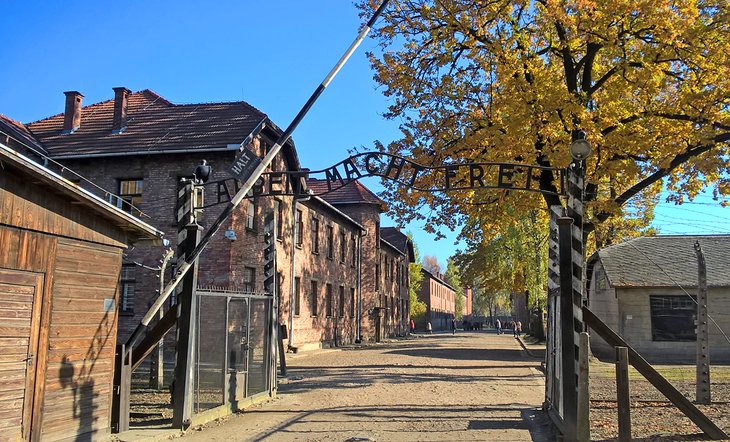Poland , officially the Republic of Poland, is a country in Central Europe. It is divided into 16 administrative provinces called voivodeships, covering an area of 312,696 km². Poland has a population of over 38 million and is the fifth-most populous member state of the European Union.
Poland’s territory extends from the Baltic Sea in the north to the Sudeten and Carpathian Mountains in the south. The country is bordered by Lithuania and Russia to the northeast, Belarus and Ukraine to the east, Slovakia and the Czech Republic to the south, and Germany to the west. Poland also shares maritime boundaries with Denmark and Sweden.
Tourist attractions in Poland vary, from the mountains in the south to the sandy beaches in the north, with a trail of nearly every architectural style. The most visited city is Kraków, which was the former capital of Poland and serves as a relic of the Polish Golden Age and the Renaissance. Kraków also held royal coronations of most Polish kings and monarchs at Wawel, the nation’s chief historical landmark. Among other notable sites in the country is Wrocław, one of the oldest cities in Poland which was a model for the founding of Kraków. Wrocław is famous for its dwarf statues, a large market square with two town halls, and the oldest Zoological Gardens with one of the world’s largest number of animal species. The Polish capital Warsaw and its historical Old Town were entirely reconstructed after wartime destruction. Other cities attracting countless tourists include Gdańsk, Poznań, Lublin, Toruń as well as the site of the German Auschwitz concentration camp in Oświęcim. A notable highlight is the 13th-century Wieliczka Salt Mine with its labyrinthine tunnels, a subterranean lake and chapels carved by miners out of rock salt beneath the ground.
1.Wieliczka Salt Mine
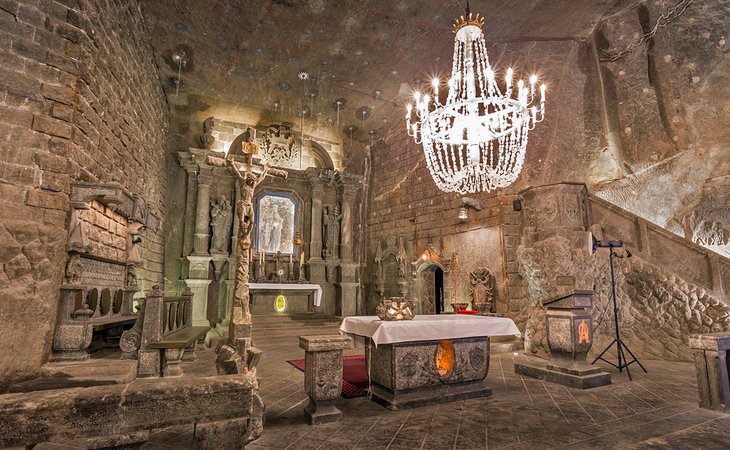
The Wieliczka Salt Mine, in the town of Wieliczka, southern Poland, lies within the Kraków metropolitan area. From Neolithic times, sodium chloride was produced there from the upwelling brine.
The Wieliczka Salt Mine is now an official Polish Historic Monument (Pomnik Historii) and a UNESCO World Heritage Site. Its attractions include the shafts and labyrinthine passageways, displays of historic salt-mining technology, an underground lake, four chapels and numerous statues carved by miners out of the rock salt, and more recent sculptures by contemporary artists.
The mine is currently one of Poland’s official national Historic Monuments (Pomniki historii), whose attractions include dozens of statues and four chapels carved out of the rock salt by the miners. The older sculptures have been supplemented with new carvings made by contemporary artists. About 1.2 million people visit the Wieliczka Salt Mine annually.
There is a chapel, and a reception room that is used for private functions, including weddings. A chamber has walls carved by miners to resemble wood, as in wooden churches built in early centuries. A wooden staircase provides access to the mine’s 64-metre (210-foot) level. A 3-kilometre (1.9-mile) tour features corridors, chapels, statues, and underground lake, 135 metres (443 ft) underground. An elevator (lift) returns visitors to the surface; the elevator holds 36 persons (nine per car) and takes about 30 seconds to make the trip.
2.Warsaw Old Market Place
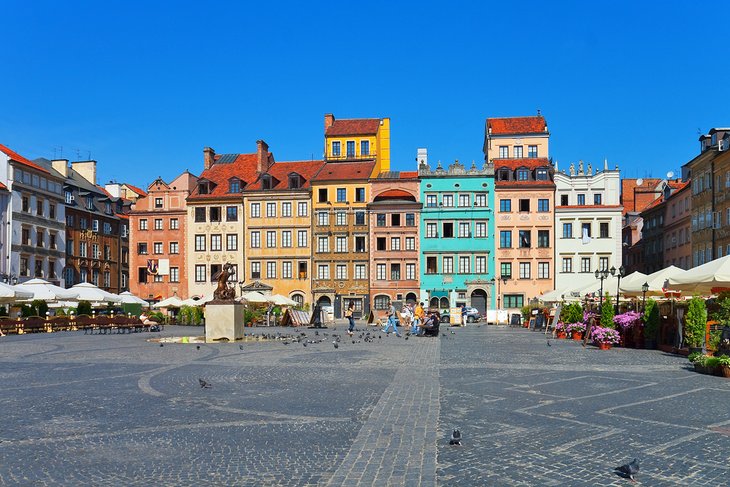
Warsaw’s Old Town Market Place is the center and oldest part of the Old Town of Warsaw, capital of Poland. Immediately after the Warsaw Uprising, it was systematically blown up by the German Army. After World War II, the Old Town Market Place was restored to its prewar appearance.
The Old Town Market Place is the true heart of the Old Town, and until the end of the 18th century it was the heart of all of Warsaw. It originated in the late 13th century, at the same time that the city was founded. Here the representatives of guilds and merchants met in the town hall (built before 1429, pulled down in 1817), and fairs and the occasional execution were held. The houses around it represented the Gothic style until the great fire of 1607, after which they were rebuilt in late-Renaissance style and eventually in late-Baroque style by Tylman Gamerski in 1701.
The main feature at that time was the immense town hall, reconstructed in 1580 in the style of Polish mannerism by Antoneo de Ralia and again between 1620 and 1621. The architecture of the building was similar to many other structures of that type in Poland (e.g. the town hall in Szydłowiec). It was adorned with attics and four side towers. A clock tower, embellished with an arcade loggia, was covered with a bulbous spire typical for Warsaw mannerist architecture (an example being the Royal Castle).
The district was damaged by the bombs of the German Luftwaffe during the Invasion of Poland (1939). The ancient Market Place was rebuilt in the 1950s, after having been destroyed by the German Army after the suppression of the 1944 Warsaw Uprising. Today it is a major tourist attraction.
3.Malbork Castle
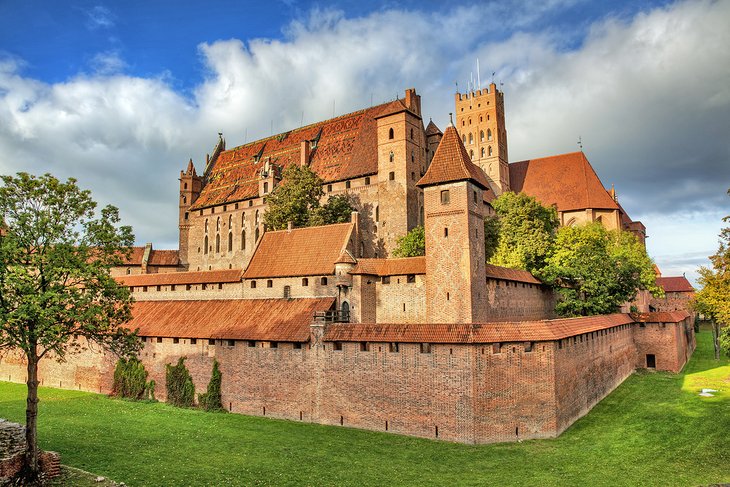
The Castle of the Teutonic Order in Malbork is a 13th-century Teutonic castle and fortress located near the town of Malbork, Poland. It is the largest castle in the world measured by land area and a UNESCO World Heritage Site.
The castle is a classic example of a medieval fortress and, on its completion in 1406, was the world’s largest brick castle. UNESCO designated the “Castle of the Teutonic Order in Malbork” and the Malbork Castle Museum a World Heritage Site in December 1997. It is one of two World Heritage Sites in the region (north-central Poland), together with the “Medieval Town of Toruń”, which was founded in 1231.
Malbork Castle is also one of Poland’s official national Historic Monuments (Pomnik historii), as designated on 16 September 1994. Its listing is maintained by the National Heritage Board of Poland.
The castle was built by the Teutonic Order after the conquest of Old Prussia. Its main purpose was to strengthen their own control of the area following the Order’s 1274 suppression of the Great Prussian Uprising of the Baltic tribes. No contemporary documents survive relating to its construction, so instead the castle’s phases have been worked out through the study of architecture and the Order’s administrative records and later histories. The work lasted until around 1300, under the auspices of Commander Heinrich von Wilnowe.The castle is located on the southeastern bank of the river Nogat. It was named Marienburg after Mary, patron saint of the religious Order. The Order had been created in Acre (present-day Israel). When this last stronghold of the Crusades fell to Muslim Arabs, the Order moved its headquarters to Venice before arriving in Prussia.
4.Lazienki Park
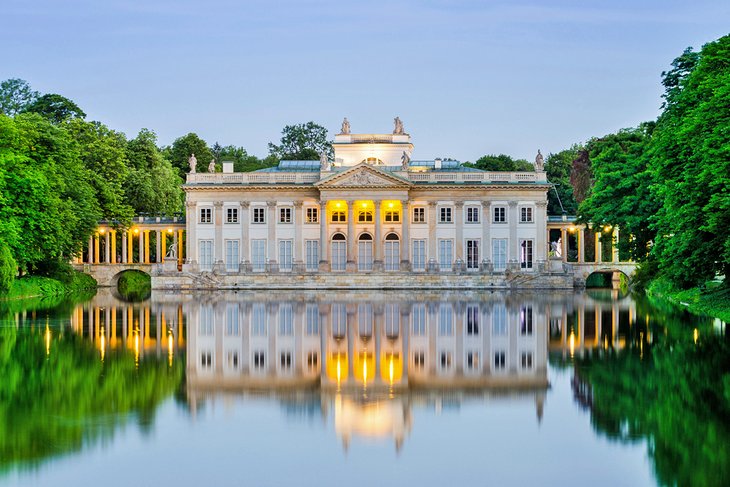
Łazienki Park or Royal Baths Park is the largest park in Warsaw, Poland, occupying 76 hectares of the city center. The park-and-palace complex lies in Warsaw’s central district on Ujazdów Avenue, which is part of the Royal Route linking the Royal Castle with Wilanów Palace to the south.
Łazienki Park was designed in the 17th century by Tylman van Gameren, in the baroque style, for military commander Stanisław Herakliusz Lubomirski. It took the name Łazienki (“Baths”) from a bathing pavilion that was located nearby.
The picturesque garden scheme owes its emergence as its present shape and appearance mainly to the last ruler of the Polish–Lithuanian Commonwealth, King Stanisław August Poniatowski (Stanislaus II Augustus).In the mid-16th century, it became part of the estates of Poland’s Italian-born Queen Bona Sforza who built a wooden manor house with an Italian garden on this site. Later, the wooden manor house of Queen Anna Jagiellon stood on this spot, immortalized in 1578 by the performance of the first Polish play, Dismissal of the Greek Envoys by Jan Kochanowski. To the south, King Sigismund III Vasa had a four-sided stone castle with corner towers erected in 1624.
By then, the royal complex also included the baroque Belvedere Palace situated at the southern edge of the escarpment. In one of the wings, the king set up a faience factory whose products were known as Belvedere vessels. Whenever Stanisław Augustus visited Łazienki, he was followed by his entire court and closest family members. Decorative tents were set up in the garden to accommodate mainly all the servants and guards. At such times, the park was filled with strolling couples, people in carriages and small boats or gondolas. Colourful and raucous spectacles including firework displays and other illuminations were staged in the gardens and often attended by the citizens of Warsaw. Such was the case when a magnificent carousel was set into motion to mark the unveiling of the King John III Sobieski monument in 1788.
5.Schindler’s Factory
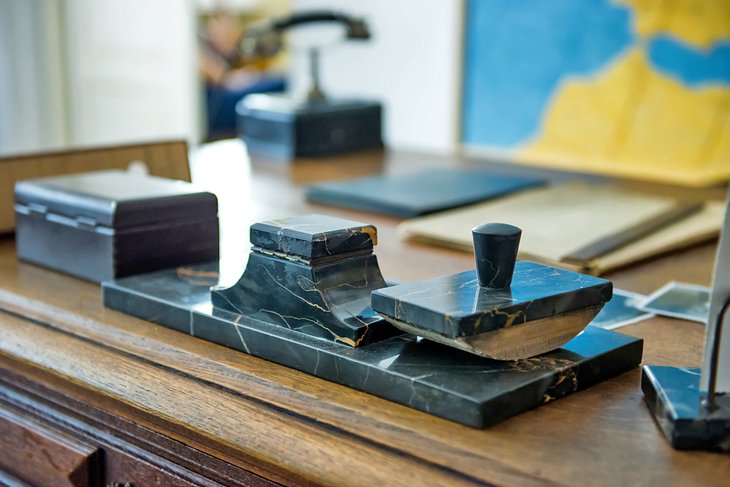
Oskar Schindler’s Enamel Factory is a former metal item factory in Kraków. It now hosts two museums: the Museum of Contemporary Art in Kraków, on the former workshops, and a branch of the Historical Museum of the City of Kraków, situated at ul.
he company was established by three Jewish entrepreneurs: Michał Gutman from Bedzin, Izrael Kahn from Kraków, and Wolf Luzer Glajtman from Olkusz. The partners leased the production halls from the factory of wire, mesh, and iron products with its characteristic sawtooth roofs, and purchased a plot at ul. Lipowa 4 for their future base. It was then that the following were built: the stamping room where metal sheets were processed, prepared and pressed, the deacidification facility (varnishing) where the vessels were bathed in a solution of sulfuric acid to remove all impurities and grease, and the enamel shop, where enamel was laid in a number of layers: the priming coat first, then the colour, and finally another protective coat.
6.Crooked Forest, Gryfino
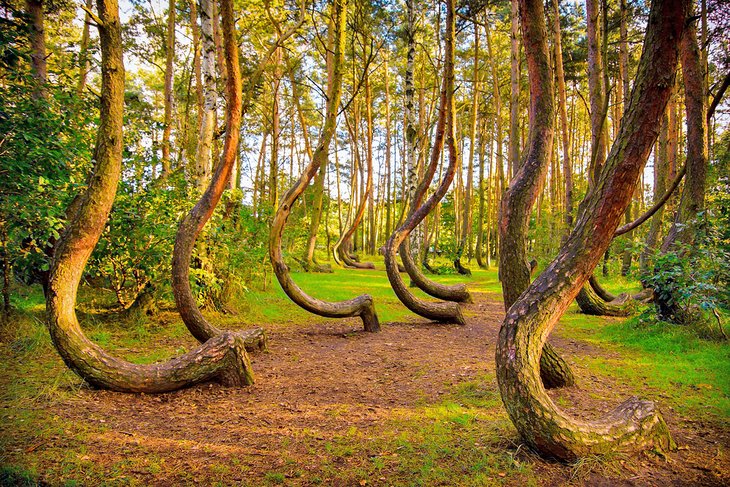
The Crooked Forest is a grove of oddly-shaped pine trees located in the village of Nowe Czarnowo near the town of Gryfino, West Pomerania in north-western Poland. It is a protected natural monument of Poland. This grove of 400 pines was planted in the village of Nowe Czarnowo around 1930.
It is generally believed that some form of human tool or technique was used to make the trees grow or bend this way, but the method has never been determined, and remains a mystery to this day. It has been speculated that the trees may have been deformed to create naturally curved timber for use in furniture or boat building. Others surmise that a snowstorm could have bent the trunks, but there is little evidence of that.
The pines were originally planted here in the 1930s, but it took about 10 years before the trunks started to show their characteristic bent. Despite many theories, there’s a standing heated debate on whether the curvature was created artificially by manipulating the trees — or whether it just happened naturally or accidentally.
Regardless of the cause, the eerie presence of the trees is hard to deny, especially as the rest of the forest is full of healthy, perfectly straight pine trees. It’s a great place for a quiet hike in the silence of the forest.
7.Warsaw Rising Museum
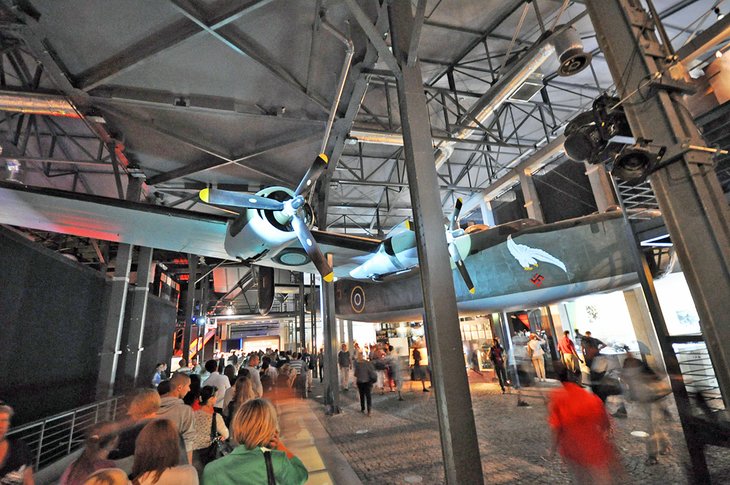
The Warsaw Rising Museum, in the Wola district of Warsaw, Poland, is dedicated to the Warsaw Uprising of 1944. The institution of the museum was established in 1983, but no construction work took place for many years. It opened on July 31, 2004, marking the 60th anniversary of the uprising.
The museum covers all aspects of the Warsaw Uprising.
There are exhibits over several floors, containing photographs, audio and video, interactive displays, artifacts, written accounts, and other testimonies of how life was during the German occupation of Warsaw, the uprising, and its aftermath. There are displays dedicated to each district of Warsaw. There are many free informative leaflets and flyers (in Polish and English), including 63 calendar pages covering the dates from 1 August 1944 to 2 October 1944 – each containing a summary of the most important events that took place on that particular day of the uprising.
Exhibits here include many rooms and events brought to life through films, artifacts, recreations, and interactive displays, including replicas of the sewer tunnels used to move around the city in secret, an insurgent hospital, and a print shop where you can see posters and underground newspapers.
Several rooms show continuous original footage of the events, and there’s a special section dedicated to the Nazi occupation and the atrocities committed during the uprising.
